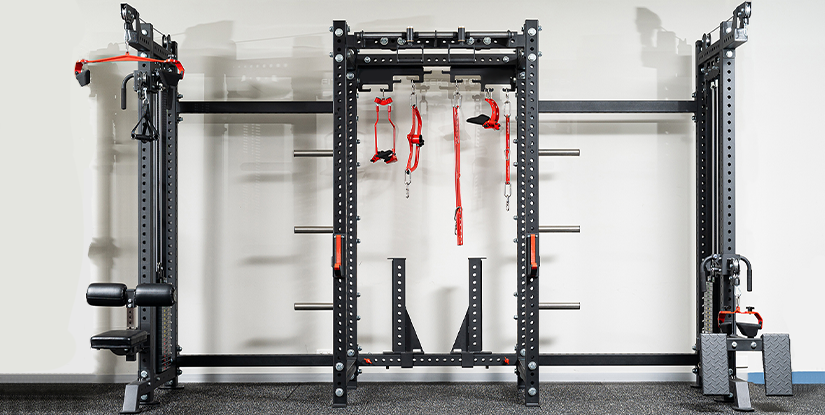Cable Machine Accessories: Attachments, Selection & Usage Guide

Cable Machine Accessories: Optimize Your Functional Strength Training
Cable machines are among the most versatile pieces of gym equipment, and the right accessories transform a single station into a comprehensive training system. This guide covers the most useful cable machine accessories, how to choose them, safe usage, maintenance tips, and programming ideas to maximize results for strength, hypertrophy, mobility, and rehab.
Why Accessories Matter
Attachments broaden exercise variety, improve biomechanics, and allow targeted muscle isolation. Proper accessories also enhance comfort and safety—non-slip grips, padded straps, and ergonomic handles reduce joint stress and improve force transfer during loaded movements.
Core Types of Cable Machine Accessories
- Single Handles (D-Handles) – Ideal for unilateral work such as single-arm rows, cable lateral raises, and one-arm triceps extensions.
- Dual-Grip Handles – Provide neutral or pronated grips for chest flyes, rows, and steep-angle presses.
- Tricep Rope – Designed for triceps pushdowns, face pulls, and hammer curls. The split ends allow natural wrist rotation.
- Lat Pull Bar – Wide and narrow grips for pulldowns, rows, and curls; some bars include multi-angle grips for variety.
- EZ Curl Bar Attachment – Curved bar that reduces wrist strain during curls and reverse curls on a cable.
- Ankle Straps – Padded straps for hip abduction, leg kickbacks, glute work, and leg curls.
- Short Bars and Handles – Compact bars for seated rows or close-grip press variations.
- Carabiners and Swivels – High-quality connectors that allow smooth rotation and reduce cable twist.
- Face Pull Attachments/Handles – Wide rope or short grips that improve external rotation and scapular mechanics.
Choosing the Right Accessories
- Compatibility: Confirm pin diameter, cable pulley size, and carabiner fit with your machine model.
- Material & Grip: Look for textured rubber or leather-wrapped handles for secure grip; padded straps should use dense foam or neoprene.
- Durability: Stainless steel carabiners, reinforced stitching on straps, and powder-coated bars resist wear in commercial settings.
- Ergonomics: Angled handles and rotating swivels reduce joint strain and mimic natural movement paths.
Maintenance and Safety
- Inspect attachments regularly for fraying, loosening, or corrosion. Replace straps or rope ends that show wear.
- Clean grips and padding with mild detergent; avoid harsh chemicals that degrade material.
- Use proper carabiners rated for gym use; never substitute hardware not designed for load-bearing fitness equipment.
- Store attachments on designated racks to prevent deformation and extend lifespan.
Programming Tips
Accessories enable targeted and progressive programming. Examples:
- Strength: Use lat bars and single handles for heavy compound variations—low rep ranges (3–6) with controlled tempo.
- Hypertrophy: Employ tricep ropes and shorter bars for higher volume sets (8–15) and constant tension techniques.
- Functional & Athletic: Combine ankle straps, D-handles, and ropes for single-leg and rotational patterns to build stability.
- Rehab & Mobility: Use light loads with ropes and face-pull attachments to reinforce scapular control and rotator cuff health.
Cost and Value Considerations
Basic attachments are affordable and provide high training value. Commercial-grade options cost more but are justified in busy facilities. Prioritize fundamentals—one rope, two D-handles, a lat bar, and a pair of ankle straps—before expanding specialty items.
Installation and Quick Setup
Most attachments are user-friendly: clip carabiner to the pulley, ensure secure closure, and test with a light load before progressing. Rotating swivels reduce cable twist—use them for exercises that involve extensive rotation.
Sustainability and Recycling
Choose accessories with replaceable parts (carabiners, ropes, padding) to reduce waste. Recycle metal components and donate usable attachments when upgrading equipment.
Conclusion
Investing in quality cable machine accessories expands exercise selection, enhances safety, and improves training outcomes across strength, hypertrophy, and rehabilitation goals. Prioritize compatibility, ergonomics, and durability to maximize return on investment.
FAQs
- Q: What are the essential cable machine accessories? A: Tricep rope, D-handles, lat bar, ankle straps, and a sturdy carabiner.
- Q: How often should I replace rope attachments? A: Replace when frayed or stiff; inspect monthly in heavy-use settings.
- Q: Can I use free-weight bars on a cable machine? A: Only if a compatible cable attachment or adapter is available; avoid makeshift setups.
- Q: Are swivel carabiners necessary? A: They reduce cable twist and improve longevity; recommended for high-rotation exercises.
- Q: Do ankle straps fit all machines? A: Most are universal, but check buckle and carabiner compatibility with your pulley system.
- Q: Which attachment is best for face pulls? A: A tricep rope or short double-handle designed for external rotation.
- Q: How do I clean padded handles? A: Wipe with mild soap and water; avoid soaking or harsh solvents.
- Q: Can accessories improve rehab outcomes? A: Yes—light resistance ropes and handles allow controlled, targeted movement for recovery.
- Q: Is it worth buying commercial-grade accessories for home gyms? A: If you train frequently and prioritize durability, yes; otherwise high-quality consumer options suffice.

